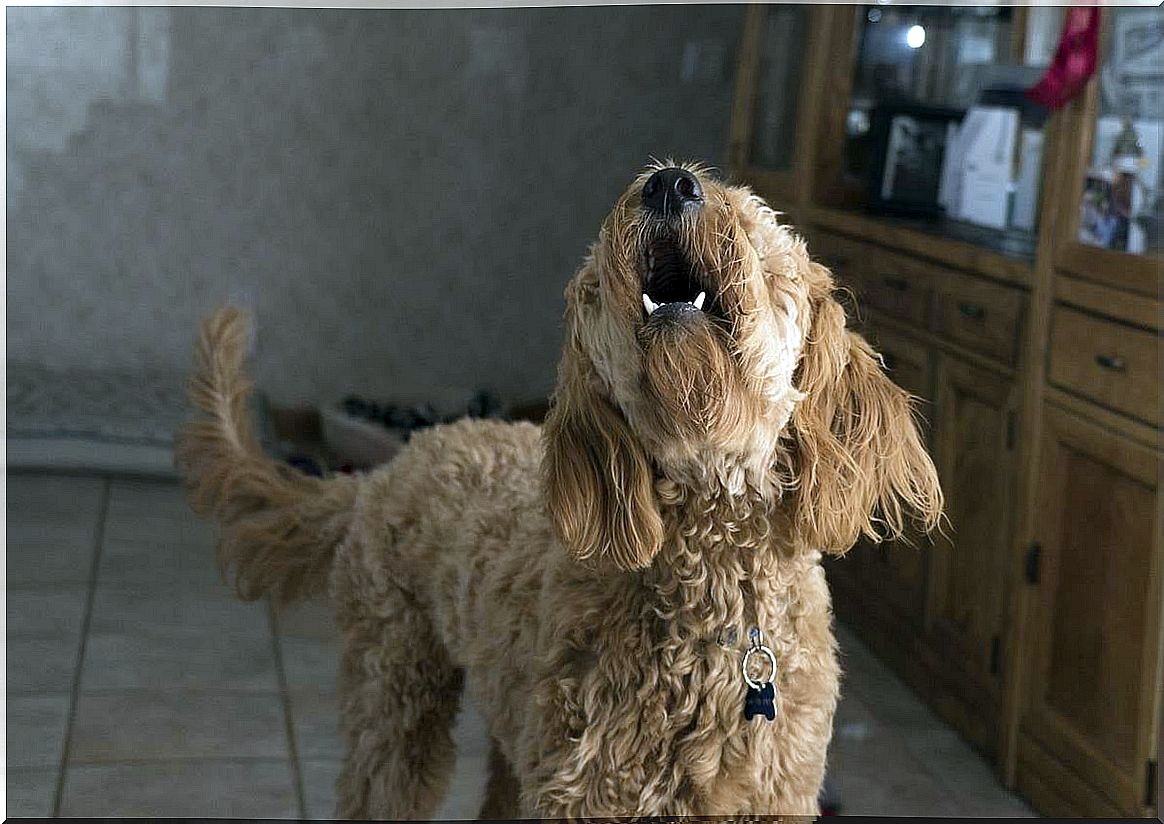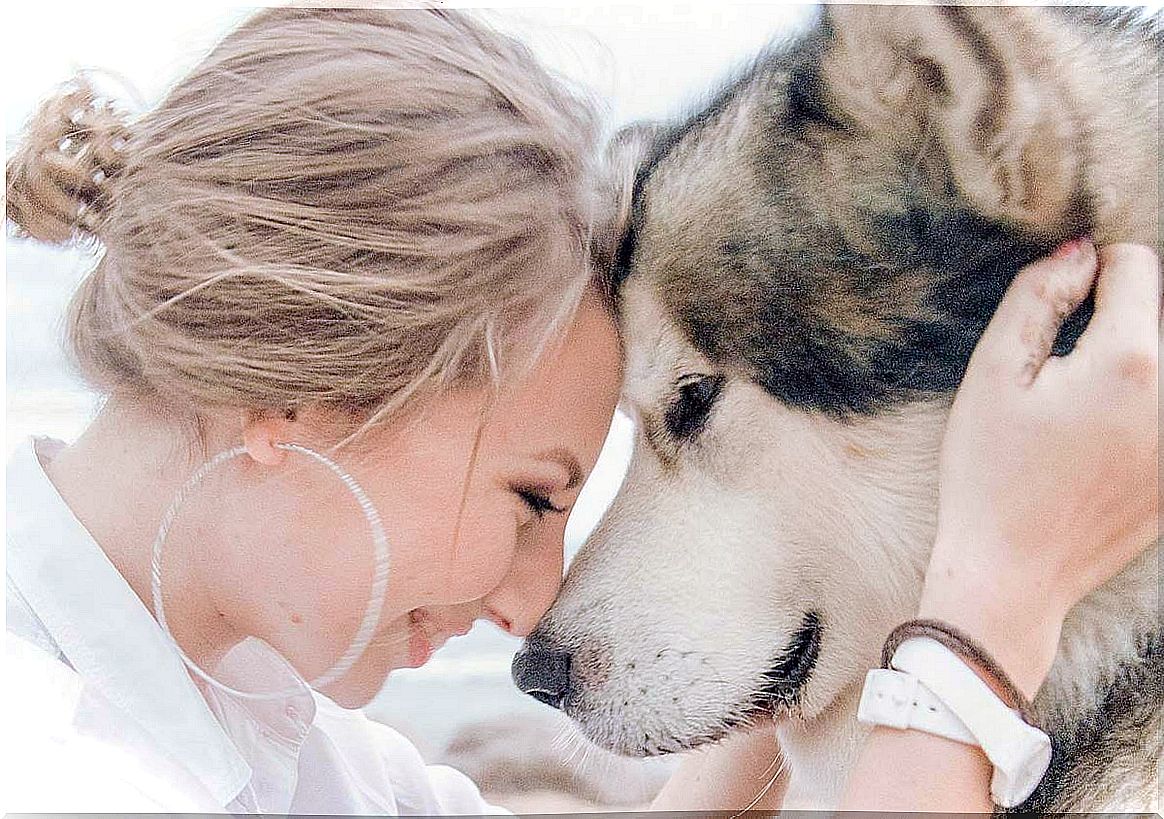Separation Anxiety In Dogs: Why Does It Happen And What Can We Do?

Barking, howling, crying, scratching on doors, nibbled furniture, urinating inside the house and even destroying objects… Separation anxiety in dogs is a very common, problematic behavior and very difficult to manage for some people. To the point that it can be a cause of abandonment in certain cases. Somewhat sad, but real.
What do our pets want to tell us with this behavior? Is it a way of making it clear to us that you are angry at being alone? Canine ethologists tell us that two events may be happening behind these situations. On the one hand, the hyperapego. Dogs are very attached to us to the point that they cannot bear to be separated from them.
Likewise, it is important to note that animals also suffer from anxiety disorders. What’s more, all that range of destructive behaviors, insistent barking and extreme nervousness characterizes what we can define as separation anxiety. Thus, in these cases, it will be of no use to scold them, threaten them or leave them without positive reinforcement.
Dogs need more than that sincere and inordinate affection that we process for them. Something they appreciate in all cases is discipline, education, training and understanding what their needs are. We analyze it.

Separation anxiety in dogs: what it is, symptoms and treatment
Separation anxiety in dogs appears in 40% of cases. And, of course, not all owners are prepared to know what to do in such circumstances. What is achieved in many cases is to further intensify the problem with inappropriate guidelines (fighting, punishment, yelling), further confusing the animal and causing the opposite of what is desired.
Thus, within the area of canine ethology it is known that this behavior is not only one of the most recurrent. It is also one of the most serious for all that it entails. We have concerned owners, neighbors annoyed by the animal’s barking, and more importantly, we have unhappy dogs who suffer and experience deep fear when their primary attachment bond (their owner) is not present.
Let’s understand more aspects.
What is separation anxiety in dogs?
Separation anxiety in dogs is a disorder that manifests itself in behavior problems. It arises when the animal is not close to its owner. Sometimes not having it in your field of vision is enough to feel anguish and stress. Being separated from your main attachment figure for several hours creates a negative emotional state.
That is, the dog “does not punish” us by breaking furniture or urinating at home for not being with them. This type of behavior is the result of fear, anxiety, despair and the fear of a threat from not being close to its owner. They feel unprotected.
What symptoms do they present?
Anxiety states in dogs can manifest themselves in many ways. Likewise, it can also increase, that is, it can start with a simple tantrum and, after weeks, lead to destructive behaviors. These would be, on average, the main symptoms:
- Scratches and need to dig to escape to find the owner.
- Barking and howling.
- Destructive chewing (they pick up flowerpots, cushions or slippers to bite them and destroy them as a result of anxiety).
- They can urinate and defecate at home, even knowing that they should not do so there.
- Likewise, it is also common for them to hypersalt or sweat excessively.
- Anxiety in dogs can lead to health problems: digestive disorders, stopping or overeating, vomiting or self-injurious behaviors.
What are the causes of anxiety?
The causes of separation anxiety in dogs have several triggers.
- The primary hyperapego. When we separate a puppy from its mother a few days after birth, emotional and socialization problems can appear. We become their main attachment figure and any separation generates anguish and fear. The most appropriate thing in all cases is that this separation be progressive and above all, after three months of age.
- Secondary hyperapego. This fact usually occurs when, after spending several months without separating from our dog, suddenly, we leave him alone for many hours to go to work, for example. The animal does not understand the reason for this sudden and unexpected change and reacts with anxiety.
- Causes caused by wrong habits of the owner. Sometimes we can feed that anxiety ourselves. Drifting into great displays of joy and excitement when we get home or when we leave intensifies the emotional state of the animal. Those changes are stressful.
- Dogs do not know how to manage the absence of their owners, they lose stability, homeostasis and it is common, therefore, that they panic when they do not have their main source of attachment.

What to do about separation anxiety behavior in dogs?
Both veterinarians, ethologists or canine trainers would insist on one aspect. We need to understand the needs of dogs. Our beloved dogs are not children and, although we love them as one of the family, we must understand that they need specific guidelines according to their nature.
- Sometimes, psychotropic drugs can be used as well as pheromonotherapy (relaxing pheromones ). Now, it is necessary to know that this resource, although it helps, does not solve the problem by any means.
- To manage separation anxiety in dogs we must carry out behavior modification therapy. The animal has to learn to tolerate separation. We should always act in a relaxed manner (do not express great joy when we arrive or show them great affection when we say goodbye to them).
- Behavior modification will focus on reducing this excessive attachment so that he learns to be alone. It is important, for example, that you stop anticipating when we are going to go out or that you relax when you hear the sound of the keys, the door or the doorbell of the house.
- He must learn to entertain himself with his toys when he is alone. We can leave you some garment of ours.
- Positive training to promote relaxation is a good strategy. Teaching them to be patient and calm is always the best key. For this, canine trainers can help us.
Last but not least, it is also necessary that we dedicate time to going out with them, ensuring that they can run, move and enjoy good walks in which to relax and enjoy our company.









